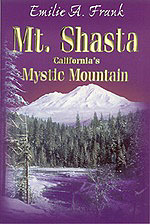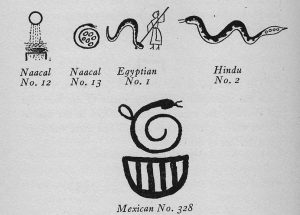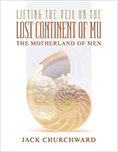In chapter 13 of Emilie A. Frank’s book, Mount Shasta California’s Mystic Mountain, the author introduces the reader to Frank Bascom and the Castle Craig petroglyphs south of Mount Shasta.

Surrounded by the Shasta-Trinity National Forest, the Caste Crag Wilderness contains these well-documented petroglyphs carved into boulders along Little Castle Creek. The online version of the chapter does not provide the pictures contained in the book, however the following video provides a glimpse of them:
Frank Bascom is identified in the book as affiliated with the US Forest Service and a dabbler in archaeology and geology. Although not the original discoverer, Bascom alerted authorities and continued to investigate.
In a published article Bascom declared:
The fact stands out that the petroglyphs or symbols chiseled in the coarse granite rocks up Castle Creek show greater skill and symmetry and a higher degree of culture than any found elsewhere in different places of southwestern United States. The petroglyphs have been colored a reddish hue with some unknown liquid solution, and it was evidently used to keep any growth of vegetation from covering the symbols.
The people who did this work were no doubt artists possessing great skill. On what is now two large boulders there was at some remote time, one huge rock, which at some time was cleft asunder. The symbols are on the east side of these two rocks. Those on the rock to the south reveal a large man’s hand, painted with some unknown stain. In the palm of the hand is chiseled the “all-seeing eye” and on the rock to the north is a beautifully-shaped woman’s hand in whose palm is chiseled a form of the swastika (which is thought to be a very ancient symbol of the four rivers of life, or eternity; the swastika symbol is pre-Christian in origin and was found in the ruins of the lost continent of Lemuria (Mu) as well as in India, China and Tibet).
Were the symbols placed on the two rocks before or after the rock broke and separated? On the rock to the north, the woman’s hand is at the side and not in the center of the rock. In chiseling the rock, the natural thing would be to place such work in the center and not at the side of the rock. This might indicate that the symbols were cut into the rock prior to its separation.
After the carvings were pronounced to be from the local Indians, Bascom responded:
‘This I doubt. In talking with the highest type of the older local Indians, they state this work was not chiseled by Indians. Therefore, we have to turn to another source. Dr. Julian Stewart shows in his book Petroglyphs of the United States (which sets forth all the petroglyphs found in this country by Indians) that the Indian and the Maya civilization started from a Lemurian colony, and stated that the Maya used ferric oxide, a red pigment, to deter erosion, and the pigment on the petroglyphs could be the same.
Bascom added:
“Churchward, in his ‘Lost Continent of Mu’ lists six of the symbols found at Castle Crags: the swastika, a form of the Maltese cross, the triangle, the all-seeing eye, the serpent and the three steps to the throne. He found these symbols engraved on clay tablets in the temples of India as they had existed in the sunken continent of Mu and I’d consider them authentic.”
While these symbols may intersect with those contained in James Churchward’s books on the lost continent of Mu, there might be a different interpretation closer to the truth.
First, there are no dates in the chapter to indicate when the initial discovery was made except for ‘several decades.’ The publication date on my copy says 1992, but James did not publish his books until the late 1920s, so an early date could be the late 1920s.
Another curious point is the account of the special liquid covering the petroglyphs preventing the growth of vegetation. Were the carvings to have been there a mere ‘several decades’ earlier and were thousands of years old, what happened to it? Pictures in the book and on the video do not show it any longer; how were the past several decades more severe than the past several thousand years?
I think the clincher is contained in the 1958 report by the University of California Archaeological Survey (#42.) Castle Crag is but one set of carvings from seven locations addressed in the report.
“In the opinion of the writers, the only facts which might have bearing on the dating of these petroglyphs as early as the nineteenth century are the publication of books such as Conway (1858), which shows characters purportedly used by the Ojibwa (e.g., elements 3, 7, 9, 10, 12, 16, 31 are shown in this volume on page 132) together with meanings. This kind of material has been perpetuated in later years by manuals or guides to Indian lore of the order of Tompkins (1941). Also, in books by James Churchward, one of the most vociferous and notorious proponents of the discredited theory of the lost continent of Mu, as shown such elements as numbers 7, 37, 39, and 56, all used in the support of the Mu theory.
In conclusion, it is not difficult to infer that, with a store of mystical symbols already at hand, and some additional imagination, any individual or group of individuals beat on executing what were conceived to be replicas of Indian petroglyphs in order to convey an esoteric message, could easily be responsible for these markings, either out of a mischievous spirit or on behalf of some organization which set great store on mystical rites, or would encourage the placement of the symbols in the hope that at some future date they might constitute evidence, for example, of the presence of migrants from “lost continents” such as Atlantis or Mu.
Have a great day.









 RSS - Posts
RSS - Posts
3 responses to “Castle Crag Petroglyphs (Mount Shasta) & the Lost Continent of Mu”